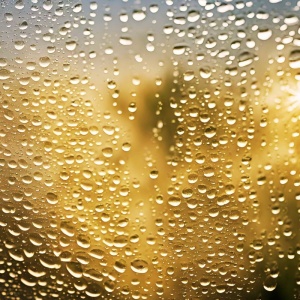How do I reduce condensation in my caravan awning?

Easy solutions to stop condensation in my caravan awning?
Awning condensation is the natural process of water vapor in the environment turning into liquid as it comes into contact with a cooler surface, such as the inside of your awning roof, window panels or furniture inside your awning. Under certain conditions, condensation can be quite severe and can be mistaken for a leaking as the condensed water drips from the fabric. It's only natural that we'd want to keep the inside of our awnings warm, especially during the cooler autumn months, but the warmer air trapped within the awning will inevitably condense when the outside temperature is cooler than the inside temperature. You'll see this process in nature too as trees drip water droplets during misty mornings or dew which form on the grass. These are examples of condensation we take for granted but are common during temperature changes especially during the spring and summer months.
So, how do we reduce the process when using our awnings? Here are some steps you can take to help if condensation is affecting your caravan or motorhome awning.
- Improve Awning Ventilation
Properly ventilate your awning by opening windows, doors, or vents, leaving top vents open overnight to allow airflow throughout your awning living area.
Pitch your awning in a spot with a natural breeze to help air circulation and avoid pitching under trees or too close to hedges and bushes.
Use an awning roof liner to regulate temperature, provide an air gap between the internal and external air temperature and catch any drips which do form.
- Manage and Avoid Obvious Moisture Sources
Avoid cooking inside the awning or leaving caravan windows open while cooking as this will allow moist, warm air to fill your awning which will condense even quicker.
Don't store wet items like clothes or towels inside the awning, as they dry the moisture will collect in the air and cause condensation within the awning.
Chose a good awning heater, electric blow heaters are best, and never use a gas heater as these not only produce toxic gases, but they massively increase moisture in the air.
- Choose Appropriate Pitching Locations
Avoid pitching close to water sources, which will increase moisture held in the air.
Avoid pitching under trees or too close to hedges and bushes.
Try not to pitch on wet ground
- Understand How Your Camping Equipment Affect Condensation
If possible use a non-breathable waterproof groundsheet to prevent moisture from the ground
Consider using an awning roof liner to regulate temperature, provide an air gap between the internal and external air temperature and catch any drips which do form.
- Weather Conditions.
Ensure good airflow to reduce humidity inside the awning and be aware of the external weather conditions.
Understand that cold rain can rapidly lower the material's temperature while the inside remains warm, leading to condensation
Take extra precautions during off-season camping when condensation is more likely to occur.
By implementing these measures, you can significantly reduce condensation in your caravan awning, making your camping experience more comfortable and preventing potential damage to your equipment.
Happy Camping!
